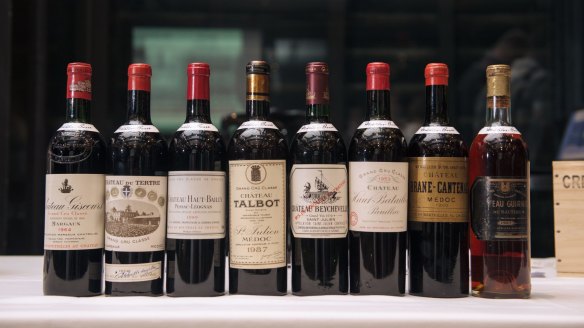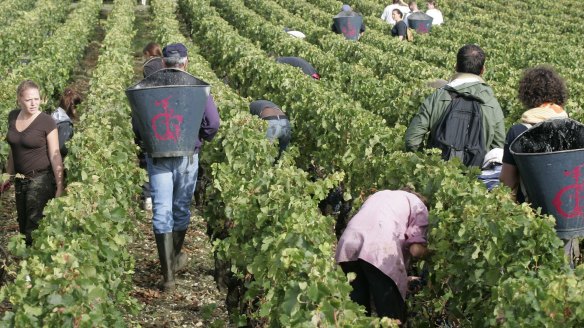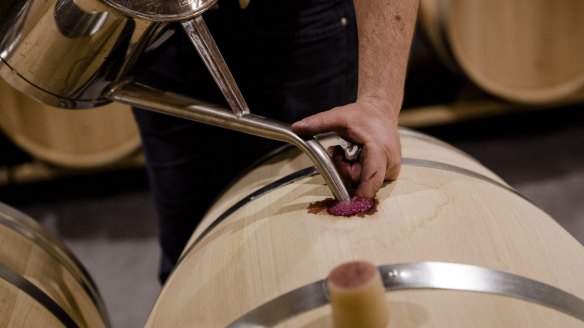Try your hand at blending in Bordeaux with a DIY wine barrel

What's a wine lover to do when Bordeaux gets ridiculously expensive? If he or she is not limited to the bargain bin, they can gather friends together and go DIY.
That's what American Hank Werronen did. He recruited 14 friends, including some from Canada and the United Kingdom, to partake in a winemaking project at Viniv, a do-it-yourself winery in Bordeaux. They produced five barrels of wine - each holding about 25 cases, or 300 bottles - from the 2015 vintage. Each barrel was modelled after a leading chateau, with Palmer, Pichon Baron, Montrose, Figeac and Smith Haut Lafitte providing inspiration. The group has become Viniv's largest project. Werronen recruited an artist friend to design the labels. The wines will be imported for the group by MacArthur Beverages.
Located in Pauillac, a famous cabernet sauvignon-centric appellation on Bordeaux's Left Bank, Viniv is owned and operated by the Cazes family, which owns Chateau Lynch-Bages. The DIY aspect allows well-heeled Bordeaux lovers to create their own blends from grapes grown in vineyards throughout Bordeaux's storied appellations. The sweat equity is done by professional vintners and winemakers. Viniv's clients enjoy the more glamorous side of winemaking: barrel tastings in the cellar, blending sessions to find the best formula for the wine, and, of course, the experience of visiting wine country and creating their own wines. There's an element of star quality as well: each team works closely with Daniel Llose, Lynch-Bage's chief winemaker, on their blends. The cost starts at about $14,000 per barrel, depending on the vineyard sources of the grapes.

The DIY winery concept was pioneered by Crushpad in Northern California. Its attempt to expand into Bordeaux failed in 2012, but inspired Viniv. Virginia's Vint Hill Winery offers local oenophiles the chance to make wines from grapes grown in Virginia, California or Washington.
Werronen, 74, a retired health care executive, discovered Viniv while touring Bordeaux on a trip he purchased in 2014 through Heart's Delight, the annual Washington, D.C., wine auction sponsored by the American Heart Association. He blended one barrel from the 2014 vintage before recruiting his team to make five barrels from across Bordeaux from 2015 grapes.
The team made the initial blends during a week-long stay in Bordeaux last May. A few members tweaked the final blends, with help from Llose, in February at the Hotel Marquis de Riscal in the Spanish region of Rioja, where Viniv had assembled client teams to finish their 2015s. So no, winemaking isn't always hard work. It's now part of the new luxury culture that emphasises experiences over material possessions. Only in this case, you get the satisfaction of having wine you helped create.

At a recent tasting in Washington, Werronen invited some of his team and a few guests to taste barrel samples of their final 2015 wines, which will be bottled this summer. I was impressed with Barrel 3, a Margaux modeled after Chateau Palmer, which showed classic Bordeaux character of graphite and black currant fruit. Barrel 5, modeled after Smith Haut Lafitte in Graves, was my second favourite, minty with flavours of plums and blackberries.
Frank Ashburn, an ophthamologist and member of the wine-blending team, was especially fond of the Margaux. "I used to grow roses, and Bordeaux is like a perfume factory," he said. "I find the finesse is amazing and the wines floral and complex."
Werronen has been a Bordeaux lover since his days in graduate school at Carnegie Mellon in the 1960s, when a wine club and an oenophile professor introduced him to some of the world's finest wines. Back then, top Bordeaux was considered expensive at about $10 a bottle.
"By the time I was 22, I had tasted all the great Bordeaux," Werronen told me. "It's been a hardship since then, because I haven't been able to afford it."
His tongue might have been firmly in his cheek, but Werronen was in a sense giving a harsh condemnation of Bordeaux's top producers for allowing their prices to skyrocket in recent years. If affluent, longtime customers are balking at today's prices, the upper echelon of Bordeaux may be increasingly dependent on a narrow market of the ultra-rich and vulnerable to instability in the global economy.
"The first growths are priced out of orbit," Werronen said, "and now the second growths are getting too pricey. The best bottle I had last year was a Chateau Palmer, but I don't want to spend $300 for a bottle."
He raised his glass with a sample of his team's wine. "This costs about $50."
And the travel several times to Bordeaux, or Rioja, to make the wine, I asked? He smiled again.
"This is a great experience and a chance to make a quality product," Werronen said. "I'm proud of this."
The Washington Post